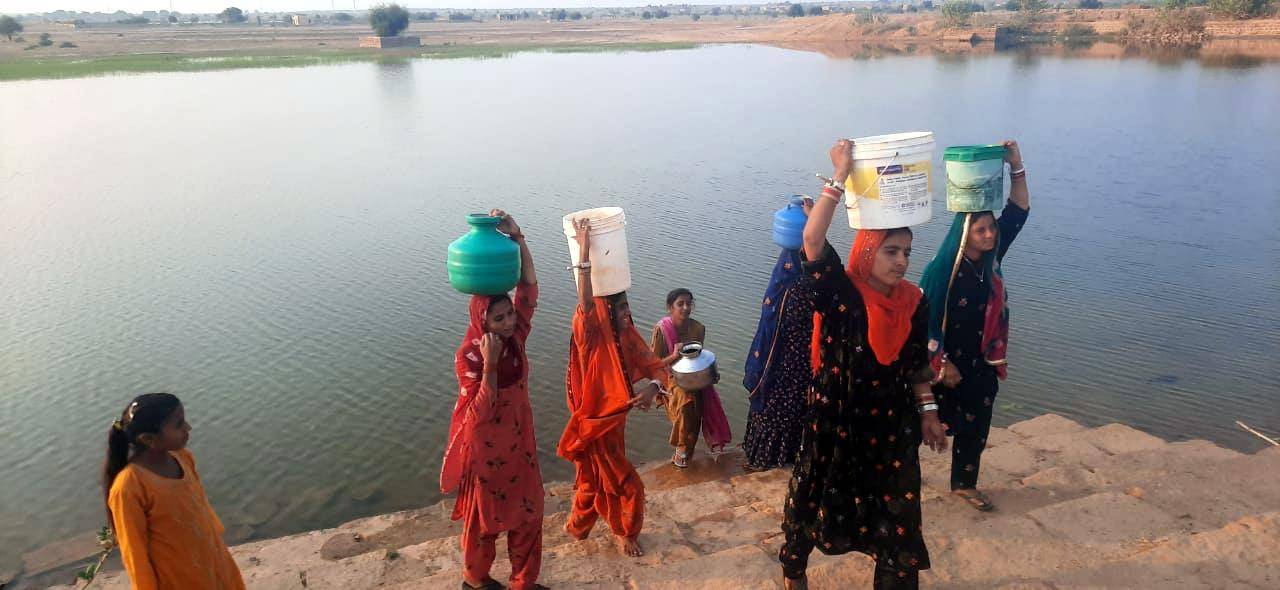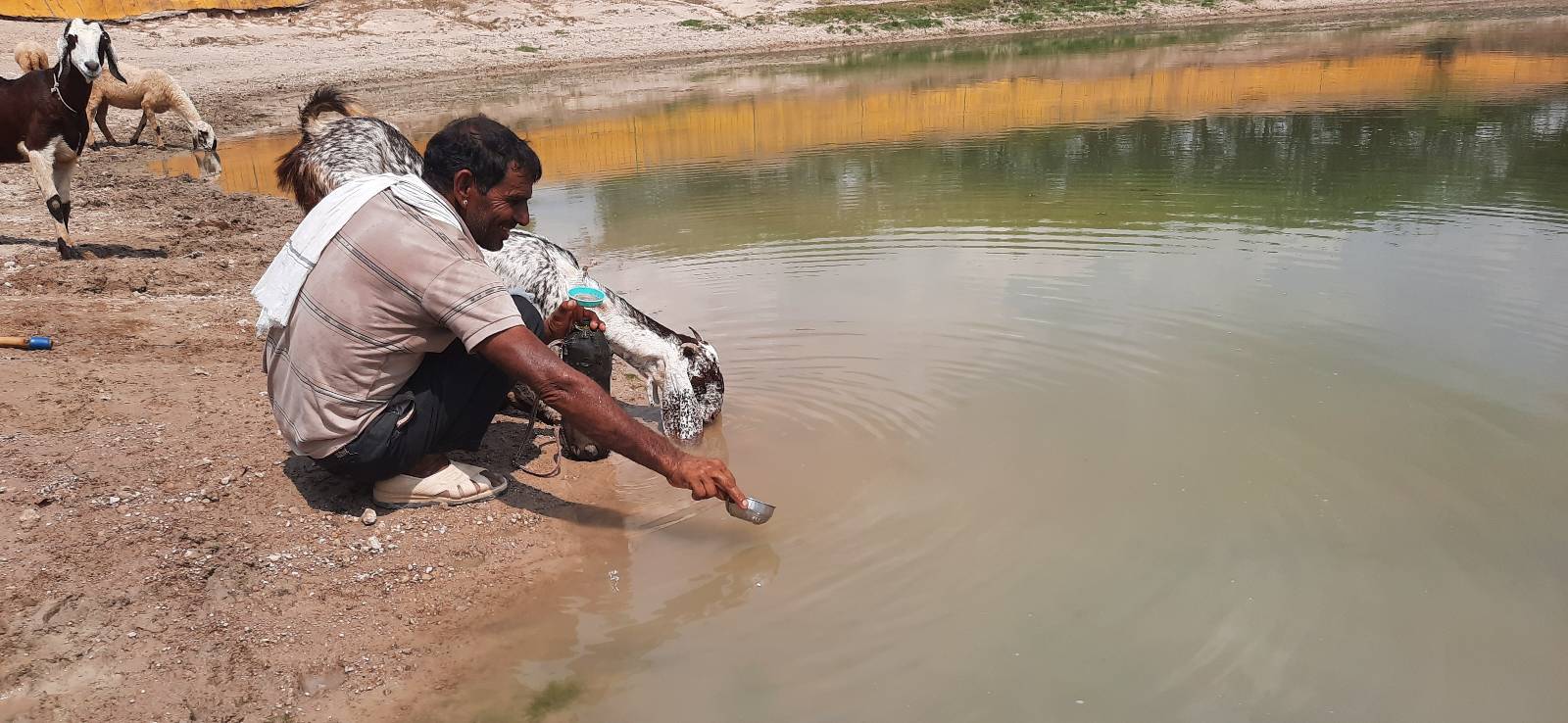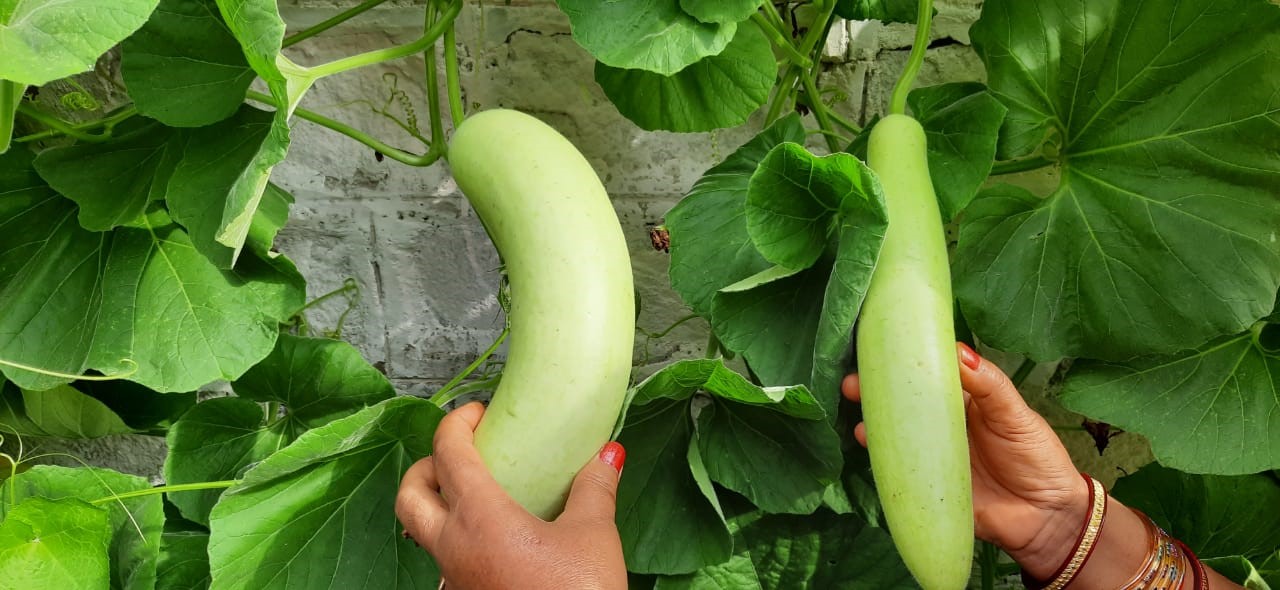Efficient use of Naadi water for successful Kitchen gardening in a desert village
India
Developed in the Hurgaov region of Rajasthan (India), where droughts are frequent, this project allowed the promotion and conservation of rainwater through rejuvenating traditional rainwater harvesting water bodies (Naadi) with the participation of the community.
Lead organization
Karunalya Foundation was founded in 2020 by a group of development activists. It is an organization working on issues related to human rights, inequality and rural development with active participation of slums and rural communities of the Rajasthan region of India.
Country
India.
Timeline
The initiative started in February 2022 and was completed in March 2023.
Funding
The total budget of the project was Indian Rupee (INR) 18,600,000 (USD 223,468). The average cost per unit/pond of rainwater was INR 200,000 and 93 ponds were funded.
The project was funded by national donors under corporate social responsibility: A.T.E. Chandra Foundation and Tata Capital Housing Finance Limited (TCHFL).
Context
The initiative was implemented in the Thar desert, in the Hurgaov region of Rajasthan (India). In general, villages of the area only receive 150-200 mm rainfall per year, which is not only low but erratic in nature. During droughts, which are common in the area: 2-3 droughts over 5 years, the vegetation production is meager and there is scarcity of drinking water. As a result, the crop production is very low in the area. The underground water is highly saline and fluoride affected, and therefore not suitable for drinking by humans and animals When the project’s team visited the Hurgaov region in 2021, people were migrating with their animals and children to search for water and food, as the ponds were empty
Main beneficiaries
The village community including women, men, adolescent girls, older people, widows, transgender, Panchayati Raj Institution (PRIs) and local public representatives were involved.
Strategy
Activities
- The types of farms involved in the project were smallscale and family farmers, as well as pastoralists. The main crops grown by the farmers are pearl millets, moong bean, moth bean, sesame, sorghum, chickpea, mustered, watermelon, and cucumber. Animals tended include cows, goats, ships, buffalos, donkeys, camels, horses, etc.
- Conservation of common property resources in order to make the community self-reliant.
- Promote and conserve rainwater through rejuvenating traditional rainwater harvesting water bodies (Naadi) with the participation of the community. Rainwater is used for meeting drinking water needs and implementing successful nature resource management (NRM) such as crop production, biodiversity conservation, ciliature development, afforestation to conserve native trees, shrubs, grasses.
- They started with one village and continued with others.
Effects and Impacts
Lessons learned and Results
- The project improved the resource efficiency (Agroecology element: efficiency) because activities managed to optimize resource utilization to enhance economic returns, reduce negative environmental impacts, and uplift the social conditions of smallholders, pastoralists, and family farmers with limited resources or facing exclusion. The rainwater harvesting structures supported water security, drought mitigation, diversified kitchen gardening, tree plantation, silvi-pasture development, as well as biodiversity conservation of flora and fauna, livelihood generation, drinking water for livestock and domestic use, dairy production for food security and enhancing’s their household income as well.
- By narrowing the yield gap between the highest and lowest agricultural performers in a region through adopting existing practices and new technologies, agricultural production can increase, benefiting livestock and animal feed production. This process has the potential to improve diets, nutrition, and economic well-being for vulnerable communities.
- Diversification was key to agroecological transitions to ensure food security and nutrition while conserving, protecting, and enhancing the natural environment (Agroecology element: Diversity).
- Each year, the initiative benefited more than 2500 smallholder farmers, 7500 livestock pastoralists and the village community in general. The village community was able to grow vegetables in their courtyard/farm field, fruits trees/orchards, and develop silvi-pasture units. The diversity of production also enabled economic diversification to ensure revenues to the villagers (Agroecology principle: Economic diversification) .
What are the enabling conditions for success?
One enabling condition for success is the participation of the village community -who was very supportive- and community-based organizations (CBOs) such as village development committee members who are very close to the villagers. CBOs mobilize community and support field initiatives for sustainability and ownership of the people. The participatory model enabled to make the project financially sustainable and replicate such initiative in nearby villages, as it enabled to do more work with less resources. Indeed, participants use their own equipment, bullock carts, camel carts for transportation and labor work, and then they outsource costly machines for digging the soil and filling in to the tractor trollies and carts.
Thanks to the project, the farmer Vimala Devi is now using the kitchen wastewater to water her 1.5 hectare land. She grows vegetables (bottle gourd, tomato, radish, green methi, coriander, and branjil, etc.), as well as horticulture units and fruit trees like ber, lemon, and gunda plants. She uses cows and goats’ manure as well as natural products to combat pests. She harvested different type of vegetables who enable her to have more revenues (INR 5000 every season) and pay for the education of her children. She also received training from the village’s institution.
Contact
Mrs Poonam Singh, Karunalaya Foundation, karunalyafoundation@gmail.com
Picture credits: Karunalya Foundation




